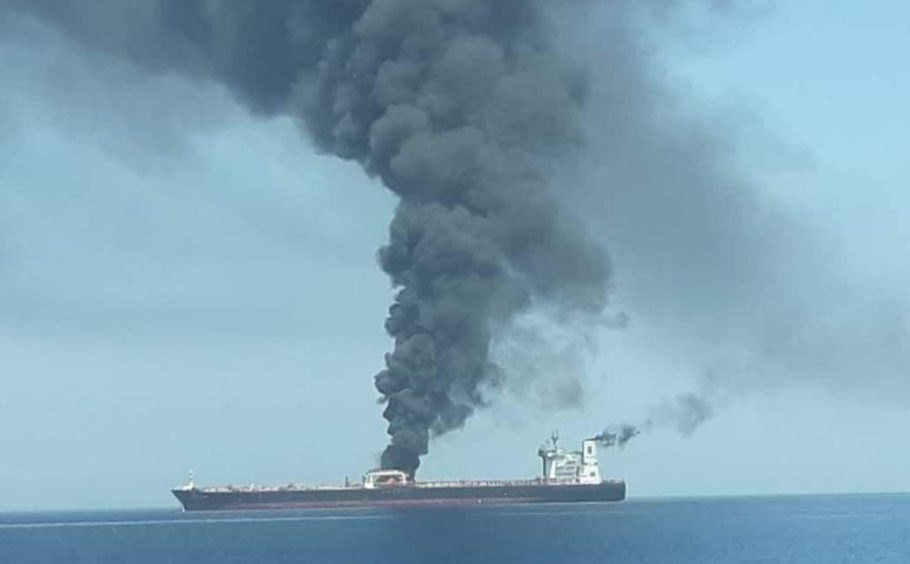
The Strait of Hormuz has become a key battleground in the stand-off between the United States and Iran, with claims and counter-claims on either side of an argument ostensibly about oil.
Here, the Press Association examines the background to the recent issues in this part of the Middle East.
– What is alleged to have happened, and why is it in the news?
On June 13, two US oil tankers near the Strait of Hormuz were attacked in an assault that left one ablaze and adrift as 44 sailors were evacuated from both vessels. The US Navy rushed to assist.
US President Donald Trump was unequivocal in apportioning blame for the attacks, telling Fox News: “Iran did it.”
Iran has denied involvement in the tanker attacks and has accused America of promoting an “Iranophobic” campaign, although it has used mines in the past against commercial traffic around the crucial Strait of Hormuz, which is connected to the Gulf of Oman.
– What is the situation as it stands?
Tensions between the United States and Iran have ratcheted up several notches in recent weeks, with Washington dispatching warships and bombers around the Persian Gulf, and Tehran threatening to break the uranium stockpile limit set by its nuclear deal with world powers by the end of the month.
These increased strains come a year after Mr Trump withdrew from Iran’s 2015 nuclear accord with world powers and restored crippling sanctions.
In turn, this prompted Iran to say it would not negotiate another deal with Washington.
The relationship between the two received a further blow in April this year when Mr Trump said other countries would face sanctions if they imported oil from Iran.
“They are a nation of terror, and we will not put up with it,” he said of Iran.
The US has beefed up its presence in the Gulf region by moving its aircraft carrier, the Abraham Lincoln, into position.
– Why is the Strait so important?
Its size belies its importance as one of the most important and strategic waterways in the world, linking the Middle East’s crude oil producers with key markets around the globe.
The Strait falls between the southern coast of Iran and the most northerly tip of Oman, a distance of around 20 miles at these pinch points.
It has two shipping lanes, each around two miles wide. Between one-fifth and one-sixth of the world’s oil moves through the strait – around 17 million barrels per day – a significant quantity of the valuable commodity.
– Where do different countries stand?
There is a clear divide, separated by the body of water. Countries to the south, such as Saudi Arabia, UAE and Qatar, are all US allies. Iran, obviously, is not.
The UK – the Government at least – has sided with the Americans, joining Saudi Arabia and the US in blaming Iran for the oil tanker attacks.
Foreign Secretary Jeremy Hunt said Britain was urging all sides in the dispute to “de-escalate” in order to avoid a slide into armed conflict.
His comments came after Labour leader Jeremy Corbyn said Britain should not be fuelling a military escalation in the Gulf without “credible evidence” Iran was behind the attacks.
– What could happen next?
Any impasse on oil leaving the Strait could have wide-ranging consequences.
The tanker attacks caused oil prices to soar amid heightened fears of a conflict in the region causing major disruption to world supplies.
The Trump administration has ordered 1,000 more troops into the Middle East, although Iranian President Hassan Rouhani has repeated Tehran is not seeking to wage war on any nation.
– Will British troops be sent?
At the moment, no. There are already an undisclosed number of British service personnel in the Middle East, predominantly from the Royal Navy. There is a joint base at Ducm in Oman, with a Combined Maritime Forces base in Manama, Bahrain.
HMS Montrose has also been in the region since the spring as part of a three-year deployment supporting counter-terror and anti-smuggling work.
It is not believed the Ministry of Defence is due to dispatch any further troops to the region in the wake of the tanker attacks.
Recommended for you
